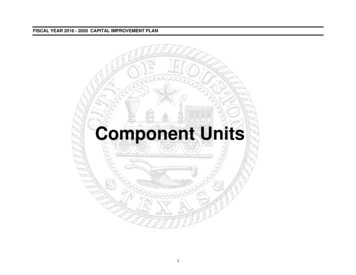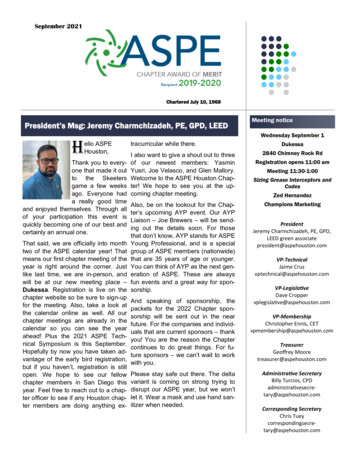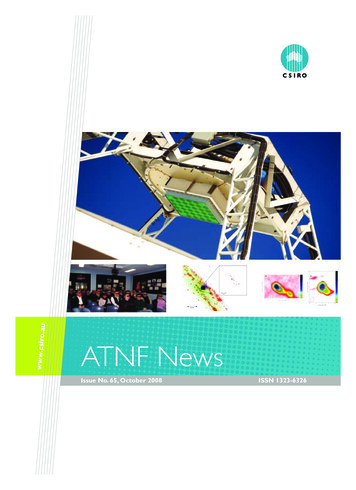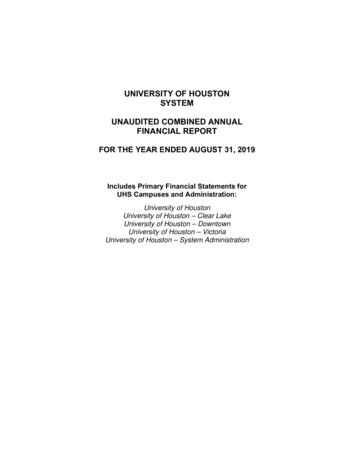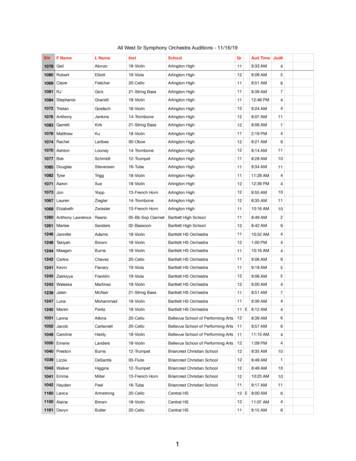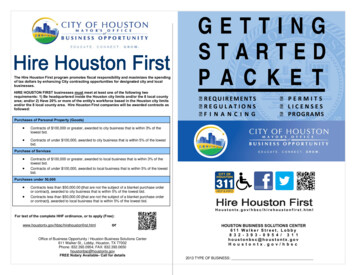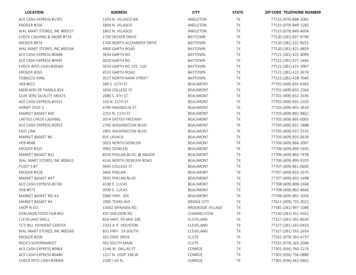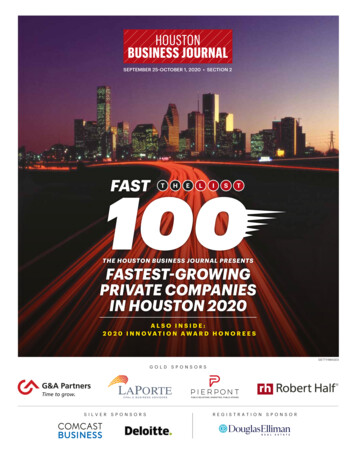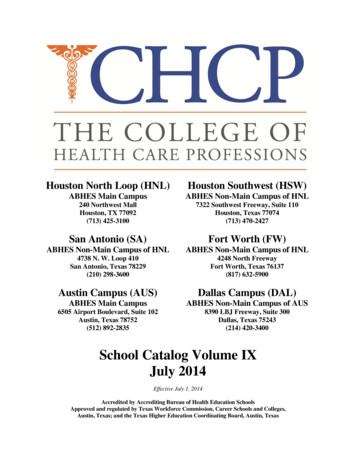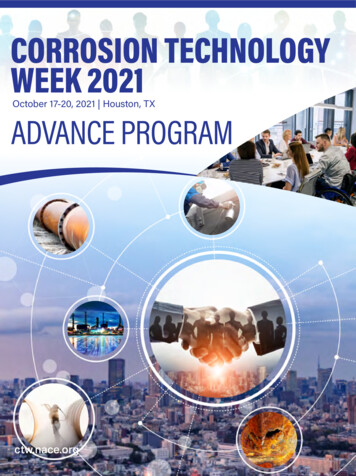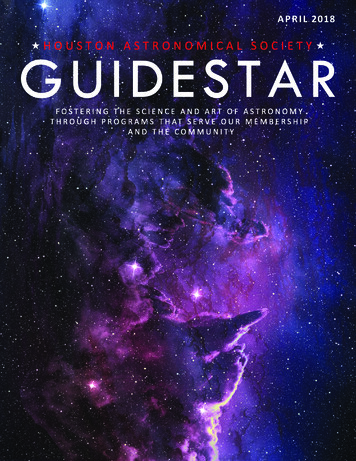
Transcription
A P R I L 2018
CONTENTSAPRIL 06, 2 0 1 8 G E N E R A L ME E T IN G3 Upcoming events"PAINTING THE SKY ART OF THE COSMOS AN ARTIST'SSTORY, AN ILLUSTRATED TIMELINE FROM ASTRONOMYMAGAZINE TO THE PLANETARIUM AND BEYOND."4 society directory5 President's Letter8 article NASA ClubT9 AsterismsChicago, IL. Mark is a10 about the Guidestarrenowned astronomical11 About H.A.S.artist whose innate talent12 parking at uhand diverse background7 article McDonaldOBSERVATORYhe April HAS GeneralMeeting speaker willbe Mark Paternostro fromcombine with a keeninterest in science and isranked among the world’sleading space scienceartists, producing a variedM A R K PAT E R N O S T R Obody of personal work.Mark studied fine art at the University of Wisconsin, Madison, and later taught artand illustration at the Milwaukee Institute of Art and Design. In 1976, Mark joinedAstronomy Magazine as resident staff artist. His flair for accurate and accessibleportrayals of complex astronomical subjects made him a sought-after artist whosework has graced the covers and pages of magazines worldwide. His work hasappeared in numerous books, including Isaac Asimov’s Library of the Universe series,and has been featured on network television programs, including Nightline and thePBS Nova series.A B O U T T H E C OV E RThinkstock.comMark Paternostro’s career arc flourished upon joining the Adler Planetarium staffin 1985, serving as Artist, Art Director, Show Director and Producer. Mark provideda distinctive vision, dynamic art direction and innovative creative skills to thenumerous full-dome sky shows and exhibits featured at the planetarium over threedecades of service. More recently, Mark managed a team of professional artists,voice talent, and others to bring NASA's Interstellar Boundary Explorer mission(IBEX), to the public. “Relying on traditional artistic skills combined with currentmedia tools allows me to create a vision of the Universe that is both compelling andrealistic,” Mark observes.I M P O R TA N TThe General Meeting for April is not at the University of Houston. It will be held at theTrini Mendenhall Community Center,1414 Wirt Rd, Houston, TX 77055DATE: Friday, April 6thNOVICE MEETING: 6:00 pmGENERAL MEETING: 7:00 pm -9:00 pm.HOUSTON ASTRONOMICAL SOCIETY2
U P C OMING EV EN TSCALENDARHAS MEETINGSAPRIL 66:00 p.m.HAS Novice MeetingAll meetings are at the University7:00 p.m.HAS General Meetingof Houston Science and ResearchAPRIL 77:00 p.m.Novice Lab, Dark Sitebuilding. See the last page forAPRIL 82:18 a.m.Last Quarter Moondirections to the location and moreAPRIL 14Prime Night, Dark Siteinformation.APRIL 158:57 p.m.New MoonAPRIL 187:00 p.m.VSIG Meeting, Mendenhall CenterAPRIL 2112:00 p.m.Spring Astronomy Day, Insperity ObservatoryAPRIL 224:46 p.m.First Quarter MoonAPRIL 297:58 p.m.Full MoonMAY 47:00 p.m.HAS Novice Meeting, U of H8:00 p.m.HAS General Meeting, U of HMAY 57:30 p.m.Novice Lab, Dark SiteMAY 79:09 p.m.Last Quarter MoonMAY 88:00 p.m.Jupiter at oppositionMAY 12Prime Night, Dark SiteMAY 156:48 a.m.New Moon7:00 pm.Loaner Telescope Training, Mendenhall CenterMAY 167:00 p.m.VSIG Meeting, Mendenhall CenterMAY 192:00 p.m.Observatory Training, Dark SiteMAY 2210:49 p.m.First Quarter MoonMAY 299:20 a.m.Full MoonFOR THE LATEST INFORMATION ON CLUB EVENTS, GO TOA ST RO N O MY HO US TO N.O RGOT H ER M E E T IN G SJOHNSON SPACE CENTER ASTRONOMICAL SOCIETY jscas.netMeets in the Lunar and Planetary Institute on the 2nd Friday of each month.FORT BEND ASTRONOMY CLUB fbac.org/club meetings.htm.Meets the third Friday of the month at 8:00 p.m. at the Houston CommunityCollege Southwest Campus in Stafford, Texas.NOVICE MEETING7:00 P.M. room 117 Science &Research 1 BldgGENERAL MEETING8:00 P.M room 117 Science &Research 1 BldgGENERAL MEMBERSHIP MEETINGThe Houston Astronomical Societyholds its regular monthly GeneralMembership Meeting on the firstFriday of each month, unlessrescheduled due to a holiday or aconflict with other events at theUniversity of Houston.BOARD OF DIRECTORS MEETINGThe Board of Directors Meeting is heldon dates and at locations scheduledby the board. Information providedto GuideStar will be published. Themeetings are open to all membersof the Society in good standing.Attendance is encouraged.HoustonAstronomicalSocietyNORTH HOUSTON ASTRONOMY CLUB astronomyclub.orgMeets at 7:30 p.m. on the 4th Friday of each month in the Teaching Theatreof the Student Center at Kingwood College. Call 281-312-1650 or E-mailbill.leach@nhmccd.edu.GuideStar HASBRAZOSPORT ASTRONOMY CLUBMeets the third Tuesday of each month at the Brazosport planetarium at 7:45p.m. The Brazosport planetarium is located at 400 College Boulevard, Clute, TX,77531. For more information call 979-265-3376.832-go4-HAS0STARLINEHOUSTON ASTRONOMICAL SOCIETY3
H OU STON A S T R ONOMIC A L S OC IE T Y D IREC TO RYD I REC TO R S AT L ARGEWALT COONEYwaltc@astronomyhouston.orgSHERRY IRBYsherryi@astronomyhouston.orgMARK FERRAZmarkf@astronomyhouston.orgDOUG MCCORMICKdougm@astronomyhouston.orgBRAM SONSA D-HOC C OMMITTEEC HAIR PER SON SAUDIT SCOTT MITCHELLaudit@astronomyhouston.orgAL COORDINATOR DOUG MCCORMICKastroleague@astronomyhouston.orgEDUCATION & OUTREACHDEBBIE MORAN & JOE nomyhouston.orgFIELD TR./OBSG JIM KINGFTO@astronomyhouston.orgTEXAS 45 -AP CHRISTOPHER OBERtexas45ap@astronomyhouston.orgMEMBERSHIP BILL KOWALCZYKmembership@astronomyhouston.orgTEXAS 45 - VISUAL RENE GEDALYtexas45@astronomyhouston.orgGUIDESTAR BOB WIESNERguidestar@astronomyhouston.orgWELCOMING EVELYN PENILLAEvelynP@astronomyhouston.orgALLEN WILKERSONallenw@astronomyhouston.orgNOVICE DEBBIE MORANnovice@astronomyhouston.orgH:713‐774‐0924 C:713‐562‐7670STUDENT DIRECTORLAUREN HERRINGTONlaurenh@astronomyhouston.orgOBSERVATORY CHRISTOPHER OBERobservatory@ astronomyhouston.orgP: 210-410-9161VIDEOGRAPHY MARIO MORENOVRT@ASTRONOMYHOUSTON.ORGPAST PRESIDENTRENE GEDALYreneg@astronomyhouston.orgPROGRAM JUSTIN MCCOLLUMprogram@astronomyhouston.orgWEB TECHNOLOGY MARK FERRAZwebmaster@astronomyhouston.orgPUBLICITY BRAM WEISMANpublicity@astronomyhouston.orgURBAN OBSERVING TBAurbanobserving@astronomyhouston.orgTELESCOPE ALLEN WILKERSONtelescope@astronomyhouston.orgP: 832‐ 265‐4773IDA REP DEBBIE MORANdebbiem@astronomyhouston.orgS IG L EA DER SDR. LAWRENCE PINSKYUniversity of HoustonO F F IC E R SPRESIDENT DON SELLEpresident@astronomyhouston.orgVICE PRESIDENT JOE KHALAFvp@astronomyhouston.orgSECRETARY ROB MOREHEADsecretary@astronomyhouston.orgTREASURER MIKE EDSTROMtreasurer@astronomyhouston.orgKID'S SIG BRAM WEISMANbramw@astronomyhouston.orgVISUAL SIG STEPHEN JONESstephenj@astronomyhouston.orgHAS BOOKING STEVE GOLDBERGHASbooking@astronomyhouston.orgA DVISOR SBRIAN CUDNIKPrairie View A&M UniversityWOMEN'S SIG RENE GEDALYreneg@astronomyhouston.orgH AS B OA R D M E E T INGHAS Board meetings are scheduled regularly. All members are invited to attend these meetings, but only board members can vote onissues brought before the board. Meetings are held at the Trini Mendenhall Community Center (1414 Wirt Road) at 6:30 p.m. on thedate specified the calendar.HOUSTON ASTRONOMICAL SOCIETY4
P R E S ID E NT ' S LE T T E R D O N S EL L EASTRONOMY – GATEWAY TO LIFELONG LEARNINGBYOT OUTREACH EVENTOn March 24, HAS held its first BringYour Own Telescope outreach event forboth our newer members and the public.Attendance at the Trini MendenhallCommunity Center was good. Interestwas high as several people came tolearn more about our hobby and 5 or6 attendees brought their telescopeslooking for guidance on how to set themup and use them.One of the exceptional things about our hobby is that amateur astronomy is agateway to lifelong learning. I’m so convinced of this fact that when discussingSTEM education, I’ve recently been referring to astronomy as a “gateway science”.It’s very common at outreach events, to hear young and old alike, exclaim theirastonishment and glee when looking through the business end of an eyepiece for thefirst time. This experience almost certainly leads the new “observer” to a sense ofawe when they see with their own eyes that there are worlds out there beyond theirnormal experience. Many begin to question how the universe works in a way thatsuch things can exist, and to wonder about our place in it. Some will follow throughon this inspiration to become interested to learn astronomy, and from there the dooris opened to all the other physical sciences (hence astronomy is a “gateway science”).Joe Khalaf gave a presentation on thedifferent types of telescopes, and whatto consider when choosing one. He alsotouched on navigating the night skyand what to expect to see when using atypical amateur telescope.The fun realy got started after the Q&Asession, when volunteers Allen Wilkerson,Learning comes when we follow our interest in astronomy and reach out for newSherry Irby, Jim King, Lauren Herrington,knowledge. Understanding comes when we take our learning and put it into practiceSarah Silva and Bram Weisman helpedor use it to answer new questions or solve problems.attendees set up their own scopes. AfterIts been this way since Galileo turned his telescope on the Moon and planets.He was interested in the Earth’s place in the universe. When he fabricated histelescope, he followed his interest and what he saw when he looked at Jupiter andVenus astonished him and convinced him that he had found proof that Copernicusthe event, all of the HAS volunteersagreed that it had been a worthwhile firstevent and that we should hold it two orthree times per year.heliocentric model of the cosmos was correct.One of the most direct paths to understanding astronomy, is to teach others whatwe have learned. HAS has a very active outreach program, and all HAS membersshould consider participating in a couple of outreach events every year. Passingyour knowledge of stargazing to others will increase your own understanding, andthe challenge of answering the questions which come from the public will give youmotivation to learn more.HOUSTON ASTRONOMICAL SOCIETY5
P R E S ID E NT ' S LE T T E R D O N S EL L ESKYNET JUNIOR SCHOLARSStargazing is only a part (an important part to be sure) of what we do in our“hobby”. We can and do use many online resources to pursue our interest inastronomy and achieve the goals we set for ourselves. This includes many sourcesof online astronomy information and data, as well as online astronomy researchtools and analysis applications. The amount of professional data and toolsavailable to amateurs online is truly amazing.interact with professional astronomers.In addition to providing adultleadership, HAS support will includesome hands-on astronomy experience.We hope to provide the students withsome practical astronomy experienceat our observatory site in Columbus.This way we can provide them witha different learning experiencewhich should aid in their overallunderstanding of astronomy and how itis done.I can tell you from first handexperience, that the students involvedin this group are interested andengaged. Whether they stay in thefield of astronomy and astrophysics,or move into some other field you canrest assured that they will becomeHAS has partnered with Bellaire High School Physics and Astronomy teacher Jimmylifelong learners themselves, and in theNewland (who is also an HAS member) to support a Skynet Junior Scholars (SJS)process, they will provide their adultgroup. This group has youth members from both Bellaire HS and HAS.leaders with the motivation to keeplearning and understanding alongsideThe Skynet Junior Scholars program is maintained by the University of Norththem.Carolina Chapel Hill with participation of several other major universities and theNational Science Foundation. SJS is a unique informal educational program forFor more information on HAS Outreachmiddle and high school students which “is designed to engage young explorersevents or the SJS program, pleasein the study of the universe using the same tools as professionals. The SJS websend you questions to: president@portal connects middle and high-school aged youth with activities, resources andastronomyhouston.orgguidance to become scholars of the sky.”Professional astronomers spend the majority of their “observing time” in theiroffices, online, setting up requests for observing time on remote telescopes. Theyplan their observations and specify what CCD images through various filters thetelescope will take. The observing run is then submitted, and the images that willbe used to in their research are downloaded for processing and measurement.The SJS program exposes students to this environment and workflow, and inthe process teaches them not only about astronomy, but how the science ofastronomy is done. The Skynet web interface allows observers to choose robotictelescopes from around the world and to image the night sky with a variety offilters in a queue-scheduled format. The program allows leaders to create usersand assign groups and manage time on the network. Group members also get toHOUSTON ASTRONOMICAL SOCIETY6
MC D ONA LD OB S E RVATORY A R TI C L EMCDONALD OBSERVATORY TO TRAIN NATIONAL PARK SERVICE IN SKYWATCHINGPROGRAMS FOR VISITORS 8 MARCH 2018“This project is similar to what we’ve done successfully inthe Texas state park system,” he added. It was McDonaldObservatory’s work with the Texas Parks and WildlifeDepartment that drew the National Park Service to proposecollaboration with McDonald.McDonald Observatory hosts hundreds of public star partieseach year, showing tens of thousands of visitors a wide rangeof objects in night sky through multiple telescopes and leadingnaked-eye tours of the constellations. The observatory alsoprovides daily programs for visitors to safely view the Sun.Visitors in the amphitheater during a public star party at the Frank N. Bash Visitors Center.The Milky Way is clearly visible under the dark skies of McDonald Observatory. The streak attop center shows the path of an artificial satellite passing overhead. Credit: Ethan TweediePhotographyThe University of Texas at Austin McDonald Observatory hasentered into a partnership with the National Park Service(NPS) to train park rangers in bringing the wonders of the nightsky to their visitors. The observatory also will create outreachprograms for the park service.“We are extremely pleased to join forces with the McDonaldObservatory to bring this training to NPS park and regionaloffice staff,” said Ray Sauvajot, NPS Associate Director forNatural Resource Stewardship and Science. “The observatory’sexperience with hands on training combined with the expertiseof our Natural Sounds and Night Skies Division will provide newopportunities for career development, capacity building forthe field, and leveraging our efforts toward enhancing visitorexperience and the preservation of our national park nightskies.”Marc Wetzel, the observatory’s Senior Outreach ProgramCoordinator, will give two workshops for national park rangers.One workshop will occur in the spring at McDonald Observatory,and another on-site at a national park. The project will developfun activities for daytime and nighttime visitors to the nationalparks and create a curriculum for the park service, he said.“This is a really fantastic partnership,” Wetzel said. “TheNational Park Service shares similar goals for interpreting thenight skies for visitors as we do.” He explained that “dark skiesare one of the parks’ natural resources, in addition to water,mountains, and wildlife.Located near Fort Davis, Texas, the observatory hosts multipletelescopes undertaking a wide range of astronomical researchunder the darkest night skies of any professional observatoryin the continental United States. It is home to the consortiumrun Hobby-Eberly Telescope (HET), one of the world's largest,which has recently completed a 40-million upgrade. Aninternationally known leader in astronomy education andoutreach, McDonald Observatory is also pioneering the nextgeneration of astronomical research as a founding partner of theGiant Magellan Telescope.Visitors enjoying a star party at the Frank N. Bash Visitors Center at McDonald Observatory.Frank Cianciolo/McDonald ObservatoryCOURTESY OF THE UNIVERSITY OF TEXASAT AUSTIN MCDONALD OBSERVATORY,PUBLISHER OF STARDATE MAGAZINESTARDATE.ORG/MAGAZINEMedia Contact:Rebecca Johnson,Communications Mgr.McDonald ObservatoryThe University of Texas at Austin 1 512-475-6763Program Contact:John Stoke, Asst. Dir. forEducation & OutreachMcDonald ObservatoryThe University of Texas at Austin 1 512-475-6765HOUSTON ASTRONOMICAL SOCIETY7
NA SA S PAC E P LAC E A S T R ONOMY C LU B A R TI C L EThis article is provided by NASA Space Place. With articles, activities, crafts, games, andlesson plans, NASA Space Place encourages everyone to get excited about science andtechnology. Visit spaceplace.nasa.gov to explore space and Earth science!MEASURING THE MOVEMENT OF WATER ON EARTH BY TEAGAN WALLAs far as we know, water is essential for every form oflife. It’s a simple molecule, and we know a lot aboutit. Water has two hydrogen atoms and one oxygen atom. Itboils at 212 Fahrenheit (100 Celsius) and freezes at 32 Fahrenheit (0 Celsius). The Earth’s surface is more than 70percent covered in water.On our planet, we find water at every stage: liquid, solid(ice), and gas (steam and vapor). Our bodies are mostlywater. We use it to drink, bathe, clean, grow crops, makeenergy, and more. With everything it does, measuring wherethe water on Earth is, and how it moves, is no easy task.The world’s oceans, lakes, rivers and streams are water.However, there’s also water frozen in the ice caps, glaciers,and icebergs. There’s water held in the tiny spaces betweenrocks and soils deep underground. With so much water allover the planet—including some of it hidden where we can’tsee—NASA scientists have to get creative to study it all. Oneway that NASA will measure where all that water is and howit moves, is by launching a set of spacecraft this spring calledGRACE-FO.GRACE-FO stands for the “Gravity Recovery and ClimateExperiment Follow-on.” “Follow-on” means it’s the secondsatellite mission like this—a follow-up to the original GRACEmission. GRACE-FO will use two satellites. One satellite willbe about 137 miles (220 km) behind the other as they orbitthe Earth. As the satellites move, the gravity of the Earth willpull on them.An artist's rendering of the twin GRACE-FO spacecraft in orbit around Earth. Credit: NASAa melting glacier will have less water, and so less mass, as itmelts. Less mass means less gravitational pull, so theGRACE-FO satellites will have less distance between them.That data can be used to help scientists figure out if theglacier is melting.GRACE-FO will also be able to look at how Earth’s overallweather changes from year to year. For example, thesatellite can monitor certain regions to help us figure outhow severe a drought is. These satellites will help us keeptrack of one of the most important things to all life on thisplanet: water.You can learn more about our planet’s most importantmolecule here: https://spaceplace.nasa.gov/waterGravity isn’t the same everywhere on Earth. Areas with moremass—like big mountains—have a stronger gravitational pullthan areas with less mass. When the GRACE-FO satellitesfly towards an area with stronger gravitational pull, thefirst satellite will be pulled a little faster. When the secondGRACE-FO satellite reaches the stronger gravity area, it willbe pulled faster, and catch up.Scientists combine this distance between the two satelliteswith lots of other information to create a map of Earth’sgravity field each month. The changes in that map will tellthem how land and water move on our planet. For example,HOUSTON ASTRONOMICAL SOCIETY8
A S T E R IS MS S T E V E GO L D B ER GASTERISMS – BROSCH 1, VIRGO DIAMONDASTERISM: a grouping of stars that form a recognizable pattern.CONSTELLATION: VirgoRIGHT ASCENSION: 12H 33M 19.0SDECLINATION: -00 38' 42"MAGNITUDE: 11 to 13SIZE: 42This asterism is located in Virgo. Starting with Spica, locate starPorrima Gamma γ VIRGO. This star is the “anchor point” for thesemi-circle of stars in Virgo.Brosch 1 is a square or diamond, depending on how it appearsin your eyepiece. The object first appears as 4 stars. But lookingcloser, one of the stars is a double. See if you can split thatdouble. Another name for this asterism is the Virgo Diamond,which is very descriptive.Brosch 1 is named for Noah Brosch, an Israeli astronomer stilldoing research today. The Wiki info on Brosch may be found atthis link: Wiki Noah BroschJust above a line from Porrima to Zaniah Eta η VIRGO, Brosch 1can be located.HOUSTON ASTRONOMICAL SOCIETY9
A B OU T T H E GU I D ES TA RThe H.A.S. GuideStar is publishedMEMBER PROJECTS SPOTLIGHTmonthly by the Houston AstronomicalWe want to spotlight the astronomical projects and observations that you areSociety. All opinions expressed hereinare those of the contributor and notnecessarily of Houston AstronomicalSociety. The monthly Meeting Noticeis included herein. GuideStar isavailable on the HAS web site to allmembers of H.A.S., and to personsworking on.Send us an email at GUIDESTAR@ASTRONOMYHOUSTON.ORG and tellus. Whether it be a specific research project in astronomy that you’re working on,an astro league observing program, an astrophotography project, or somethingelse, let us know so we can let the rest of the society know.GUIDESTAR A DVERTISIN G POLIC IESPERSONAL ADVERTISEMENTSinterested in the organization’s Members in good standing of the Houston Astronomical Society (HAS) may requestactivities. Contributions tothat an ad be placed in the GuideStar for personal items (for sale or wanted).GuideStar by members are Items offered for sale must be of interest to amateur astronomers.encouraged. Electronic submission No more than two telescopes may be advertised within any calendar year.is helpful. Submit the article in text,unformatted MS‐Word format viaemail GuideStar@astronomyhouston.org. Copy must be received by the15th of the month for inclusion in Ads will not run for more than 3 consecutive months Ads will be run on a space-available basis. Ads must be provided to the editor in electronic format (email, text file) by the 15th ofthe month preceding the month-of-issue.COMMERCIAL ADVERTISEMENTS Advertisement sizes:the issue to be available near the endo Full page 6.875”w x 9”hof the same month. Or, bring copyo Half page 6.875”w x 4.25” hto the General Membership Meetingo Quarter page 3.31” w x 4.25” h (allows for column gutter)and give it to the Editor, or phone to Commercial advertisements will be run in the GuideStar at the following fee schedule:make special arrangements. Contactthe editor for writting guidelines.EDITING & PRODUCTION:Bob Wiesner One timeOne quarter (3 consecutive months)Full page 100.00 250.00Half page 50.00 125.00Quarter page 25.00 62.50 Artwork provided must be in electronic format (image file, PDF, etc.) and must be inthe correct proportions to fit the space provided. Contact editor with questions. Artwork may be in color or in black and white. Items or services advertised must be of interest to amateur astronomers Payment for advertisements must be done in advance (pay to the ‘HoustonAstronomical Society’)T H E G U I D E S TA R I S T H EWINNER OF THE2012 ASTRONOMICALLEAGUEMABEL STERNSN E W S L E T T E R AWA R DHOUSTON ASTRONOMICAL SOCIETY10
A BOU T THE H OU S TON A S T R ONOMIC A L S O C I ETYTHE HOUSTON ASTRONOMICAL SOCIETY welcomes you to ourHOUSTONASTRONOMICALSOCIETYorganization.P.O. Box 800564Houston, TX 77280‐0564are observers, but some are armchair astronomers.The Houston Astronomical Society isa non-profit corporation organizedunder section 501 (C) 3 of theInternal Revenue Code. The Societywas formed for education andscientific purposes. All contributionsand gifts are deductible for federalincome tax purposes. GeneralThe HAS is a group of dedicated amateur astronomers, most of whomThe benefits of membership are:- Access to our 18 acre observing site west of Houston ‐‐a great place to observe the universe!- A telescope loaner program ‐‐ borrow a HAS telescope andtry observing for yourself!-A monthly novice meeting, site orientation meeting, and general meetingwith speakers of interest. Access to meeting videos on the HAS web site.- Opportunities to participate in programs that promote astronomy to thegeneral public (such as Star Parties at schools)membership meetings are open- A yearly all‐clubs meeting for Houston area organizationsto the public and attendance is- Meet other amateurs and share experiences, learn techniques,encouraged.CH E C K T HE W E BS IT EASTRONOMYHOUSTON.ORGThe HAS website not only has news andinformation about our society, but alsoa variety of features to manage yourmembership and connect with otherclub members.Current members can post photos,trade gear, pay dues, manage discountmagazine subscriptions, swap stories inand swap storiesYou’re invited to attend our next meeting. You’ll have a great time!All members have the right to participate in Society functions and to use theObservatory Site. Regular and Student Members receive a subscription to TheReflector. The GuideStar, the monthly publication of the Houston AstronomicalSociety is available on the web site. Associate Members, immediate family membersof a Regular Member, have all membership rights, but do not receive publications.Sustaining members have the same rights as regular members with the additional duestreated as a donation to the Society. Sky & Telescope and Astronomy magazines areavailable to members at a discount.the forum, and more.MEMBERSHIP APPLICATIONQuestions about the site? Need a handYou can join (or renew at the organization web site, www.astronomyhouston.org. Clickto get your account set up? Contactthe ‘Join HAS’ Tab. Send funds to address shown on last page of GuideStar. Attentionwebmaster@astronomyhouston.org.- Treasurer, along with the following information: Name, Address, Phone Number,The HAS web site is the winner of theSpecial Interests in Astronomy, Do you own a Telescope? (If so, what kind?), and where2012 Astronomical League award foryou first heard of H.A.S.excellenceE V E NT N OTIFIC ATIO N O R CANCELLATIONHAS uses RAINEDOUT.NET to communicate late breaking updates about our variousevents. . Message delivery is via text messaging and e-mail. There are several ways tosubscribe. If you would like to receive these notices via text messaging directly to yourphone, subscribe to any of the sub-groups which interest you.RainedOut notices will also automatically be sent to our e-mail list. Note thatregular e-mail list conversations are not part of RainedOut communications and willnot be sent to your phone as part of this service. Instructions to sign up for the e-maillist (a great way to keep your finger on the pulse of the club) are found ist.To receive text messages, send any or all ofthe following (one at a time) to 84483OUTREACH Public Outreach EventsSTARPARTY Members only star PartiesURBAN Urban Observing EventsMEETINGS HAS MeetingsYou will receive a confirmation messageback for each successful enrollment.For more information, please visit www.RainedOut.net.HOUSTON ASTRONOMICAL SOCIETY11
PARKI NG AT TH E U NIV E R S IT Y OF H OU S TON MA IN CA M P U SDIRECTIONS TO MEETINGFrom I‐45 going south (from downtown)- exit at Cullen Boulevard- turn right on Cullen- turn right on Holman Street; the parking lot is past the Hoffeinz Pavilion- Science and Research is across the street (2nd building back)From I‐45 going north (from NASA/Galveston)- exit at Cullen Boulevard- turn left on Cullen- turn right on Holman Street; the parking lot is past the Hoffeinz Pavilion- Science and Research is across the street (2nd building back)PARKING AT THE UNIVERSITY OF HOUSTON MAIN CAMPUSFor the monthly Houston Astronomical Society MeetingThe map below shows the location of the 15C parking lot, west of Cullen Boulevard on HolmanStreet.The map is from the University of Houston web site and identifies the lot that is available for parkingwhile attending the Houston Astronomical Society monthly meeting. This parking is availablefrom 6:30 p.m. until 10:00 p.m. on the Friday night of the HAS meeting (usually the first Friday ofthe month).This parking is free. If you get a notice from the UH campus police on the night of the meeting, callthe UH Security office and let them know that this area has been made available on HAS meetingnight by the Parking Department.HOUSTON ASTRONOMICAL SOCIETY12
Attendance is encouraged. GuideStar_HAS Houston Astronomical Society STARLINE 832-go4-HAS0 APRIL 6 6:00 p.m. HAS Novice Meeting 7:00 p.m. HAS General Meeting APRIL 7 7:00 p.m. Novice Lab, Dark Site APRIL 8 2:18 a.m. Last Quarter Moon APRIL 14 Prime Night, Dark Site APRIL 15 8:57 p.m. New Moon
